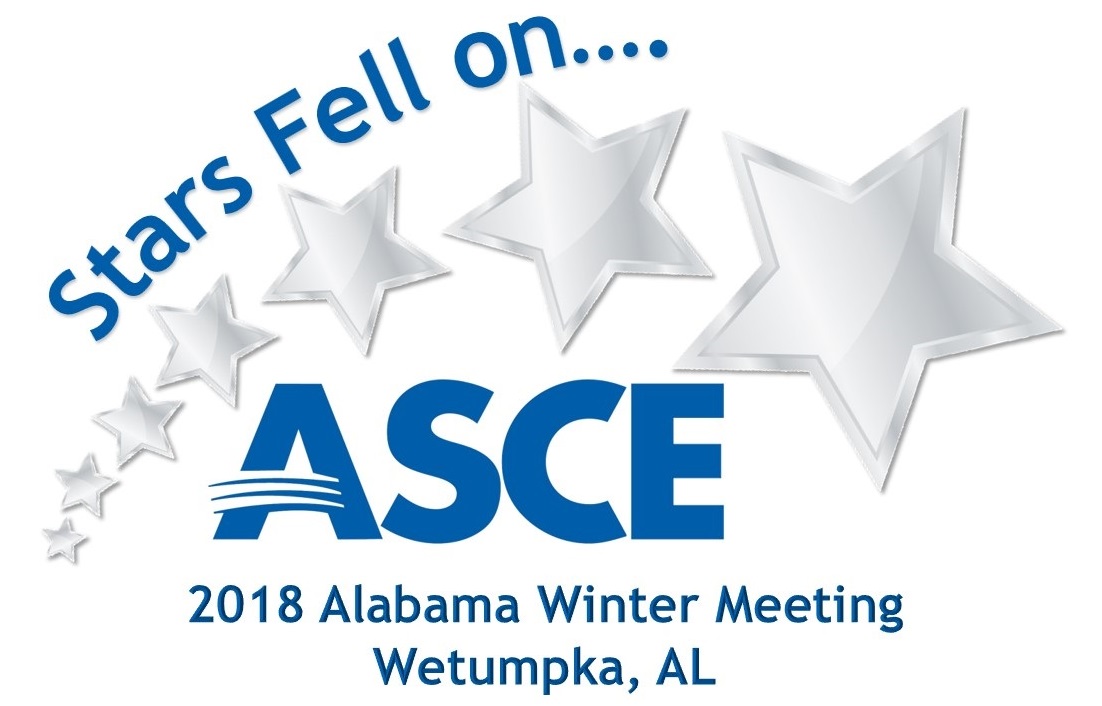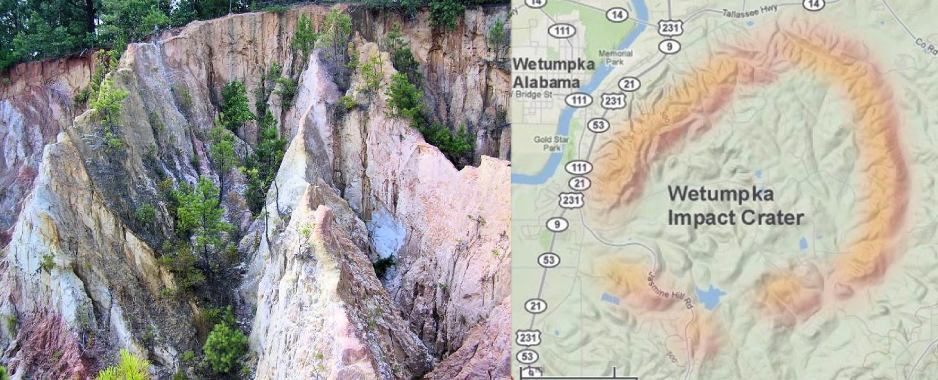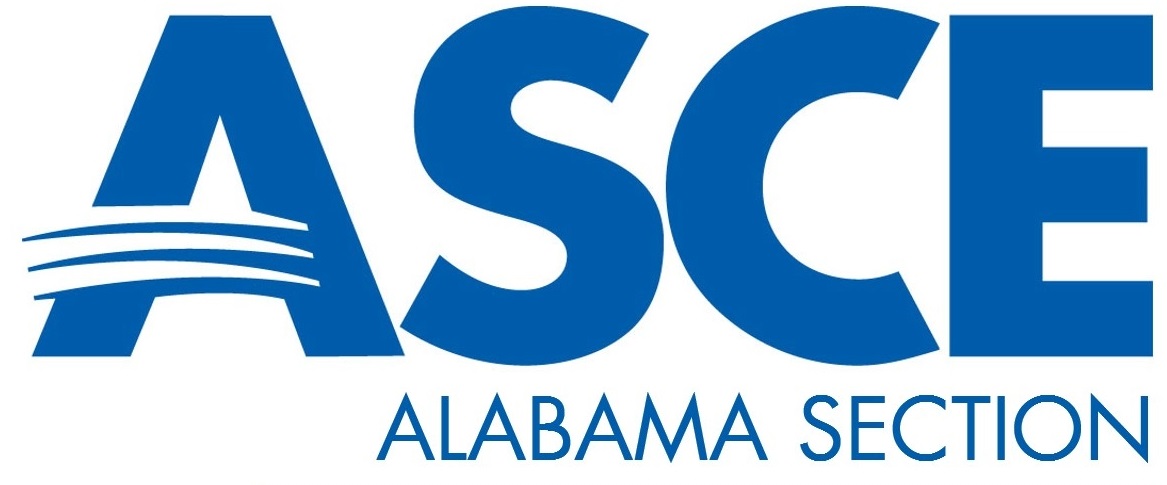2018 Winter Meeting

Conference Information
The Montgomery Branch of ASCE is hosting the 2018 Winter Meeting of the Alabama Section on Thursday, March 1, 2018. Join us at the Wetumpka Civic Center located at 410 S Main St in Wetumpka, AL 36092, for a day of educational presentations on a range of professional and technical topics in a unique setting. Participants can receive up to 6 Professional Development Hours and will have an opportunity to conduct a guided van tour of the Wetumpka Impact Crater.
The Alabama Section Board of Directors Meeting will be on Wednesday, February 28, 2018 at 3:00 p.m. at the Alabama Department of Transportation Conference Room 5 and 6.
Registration
Registration for the event is now open. Click here to register
For questions with registration, please contact the Conference Team at conferences@montgomery-asce.org or (334) 242-6517.
Meeting Agenda
This promises to be an exciting day at a great venue. The program includes discussion on a number of topics including major ALDOT projects, Legislative Update, Drones and much much more. Continental Breakfast and registration kick off at 7:15 am. Lunch will be provided. Don’t miss this great opportunity to get PDH credits and support ASCE.
For a detailed agenda of all presentations, please click HERE.
Sponsors/Exhibitors
There will be opportunities for Sponsorship and Exhibitors at the Winter Meeting. To become a Sponsor or Exhibitor, please click HERE to access a downloadable file or click above for online registration for Sponsors and Exhibitors. Sponsorship’s are available for $200 and includes 1 attendee. The sponsors/exhibitors logo will be displayed on the website and during the conference. Exhibitors are available for $500 and includes 1 attendee. Exhibit space includes 8’ x 8’ area with 6’ table and chair. Exhibit space selection preference will be in order of receipt of payment. Exhibitors will have the opportunity to setup the day before.
For recognition at the conference, email an electronic copy of your company logo to Mr. Charles Wright no later than February 21, 2018. For more detailed information, please contact Mr. Charles Wright at charles.wright@gmcnetwork.com or (334) 271-3200.
Hotel
Here is a map of available hotels in the Montgomery Area. We recommend staying Downtown or at Eastchase hotels.
Social Event
You’re invited to participate in a No-Host Social Event the night before the Conference on February 28th at 7:00 p.m. Location and additional information will be forthcoming in the next few weeks.
Impact Crater Tour

The location of the Wetumpka Astrobleme —“star-wound”— originated from a cosmic event that occurred some 80 to 83 million years ago. It was confirmed only recently, after more than two years of extensive investigation and deep earth core drilling conducted on site. It is one of the few above-ground impact crater locations in the United states and one of only about six in the entire World. Even more unusual is the fact that the structure is actually exposed (as you can see from the rim evidence in these photographs). Despite the weathering that has occurred through millions of years, the crater walls are still prominent, so the rim was obviously much higher at one time.
The projectile of the meteor impact was probably travelling between 10 and 20 miles per second. So this means the impact would have produced winds in excess of 500 miles per hour, and the meteor most likely struck at a 30-45 degree angle as it came from the northeast. They determined that it came from the northeast by the angle at which the rocks are slanted within the impact area which includes the current flow path of the Coosa River.
This can be seen looking from both directions on the Bibb Graves Bridge. Geologists speculate that the shock waves, the damage, and other effects of the impact explosion radiated out from the strike several hundred miles. Debris may have been thrown as far away as the present Gulf of Mexico. Geologists also theorize that the strike area would have been under a shallow sea, perhaps 300 to 400 feet of water, that covered most of southern Alabama at the time of the impact. It is estimated that the diameter of the meteorite to be 1,100 feet and could have been as much as three to four times larger.
Previous Winter Meetings
Click below to view presentation and pictures:


